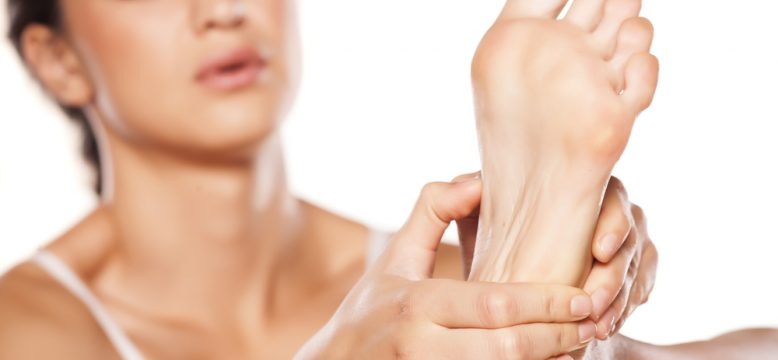Heel pain is one of the most common conditions foot health professionals deal with on a daily basis. Heel pain clinically is also known as Plantar Fasciitis. When I graduated as a Remedial Practitioner in the 90’s I was told that the only true treatment for Plantar Fasciitis was to be prescribed orthotics or perhaps surgery. Over the last 20 years, I’ve realised that orthotics may do a great job however up until recently, many people are unaware that there are effective alternative treatment options available to alleviate and eliminate Plantar Fasciitis symptoms without the need for surgery and orthotics.
So, what is heel pain (Plantar Fasciitis)?
Heel pain is a disorder that results in pain in the heel and bottom of the foot. It is clinically known as Plantar Fasciitis. It is a disorder of the insertion site of the ligament on the bone characterized by micro tears, breakdown of collagen, and scarring. The pain is usually most severe with the first steps of the day or following a period of rest. Pain is also frequently brought on by bending the foot and toes up towards the shin and may be worsened by a tight Achilles tendon. The condition can come on slowly or in many cases I’ve seen it come on without notice. In about a third of people both legs are affected.
So what causes heel pain (Plantar Fasciitis)?
Many texts state that the causes of plantar fasciitis are not entirely clear. I disagree to some extent. Everything works best when it’s in the right place. If the 28 bones of the foot are incorrectly aligned, day to day activities like walking can place extra load on the connecting muscles which lead to compensation and extra stress where these muscles attach and cause an inflammatory response. This extra tension in the connective tissue over time can create inflammatory responses and long term, heel spurs. Heel spurs are form of bony growth also known as osteophytes. Typically, you can’t feel the spurs, you feel the inflammatory response associated with them. It can be associated with inward or outward rolling of the foot and a lifestyle that involves little exercise. However, when the bones are misaligned, you are more likely to cause inflammatory responses with overuse such as from long periods of standing and an increase in exercise.
Family Genetics – Hereditary Factors
There is no doubt that there is some link between Plantar Fasciitis and family genetics. You often hear people say, ‘I remember my mum having this same problem, it must be hereditary’. Hereditary factors are biological traits that are passed down via genetics from our ancestors. These traits often relate to the misalignment or displacement of joints of the feet and legs and this can affect the way muscles contract or relax and the resultant forces loading through the beam of the foot when someone stands, walks or runs.
This also means that if you improve the alignment or placement of joints in the feet and legs and strengthen the relevant muscles around the joint you can actively change the shape of the feet and reduce the loading when weightbearing.
Shoes
Shoes are typically designed for fashion, not necessarily function. A great mentor of mind, Podiatrist – Ted Jedynak, when asked if whether he liked a client’s shoes always replied, “they’re great. Great for business!” Good supportive shoes are extremely important however, if you’re feet are misaligned, that’s all they can be – good support. Flip flops or thongs (as we Aussies call them), although very comfortable in summer for many, can create extra stresses on the connecting muscle and make your feet feel worse. Many people always have worn good supportive shoes and at some point, still suffer with heel pain.
Orthotics
The word orthotic comes from the ancient Greek word Orthoses, which means to make straight or the right way, as in Orthodox. This has been the way to help correct heel pain / plantar fasciitis since around the 1970’s and what is taught in government institutions as a treatment modality. Orthotic Therapy has made major advances in helping people who suffer with heel pain over the years and it can work extremely well. We use this in conjunction with Foot Mobilisation Techniques and exercises for longer lasting results. If you would like further information on alternative non-surgical treatment options click on this link Freedom from Heel Pain!






No comments yet.